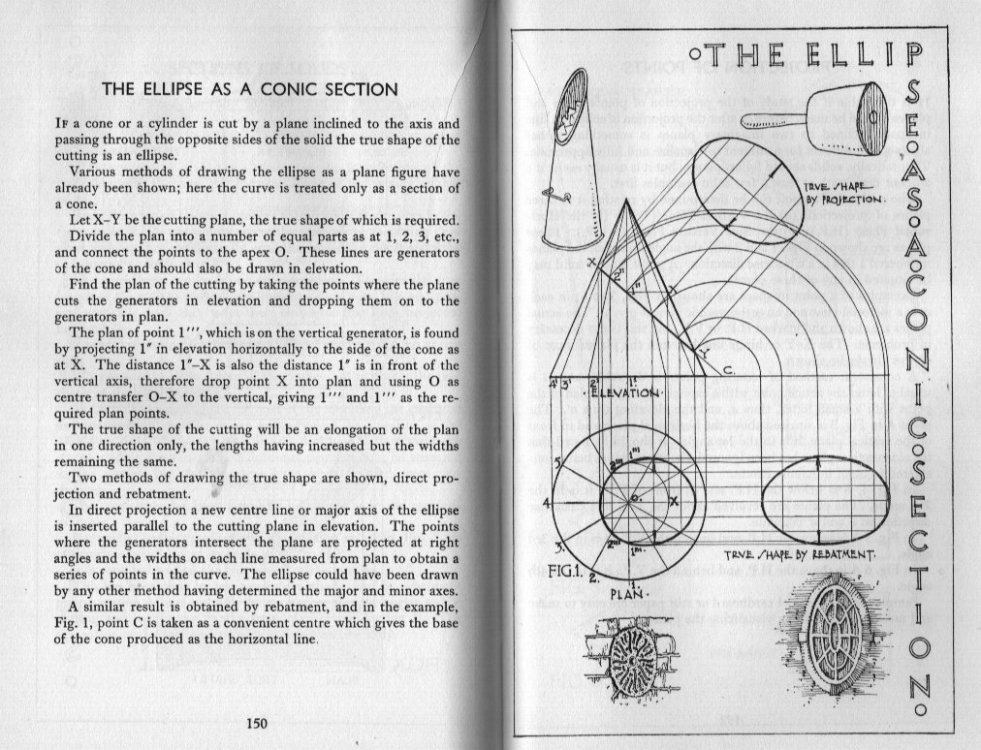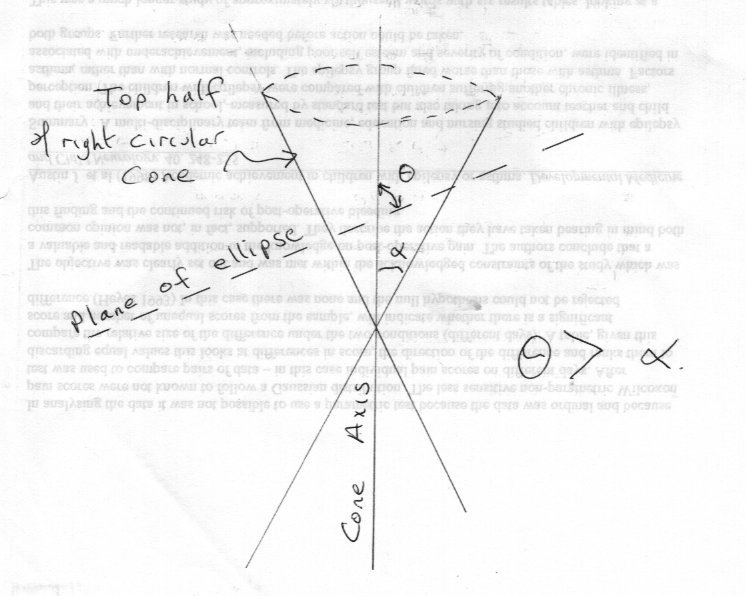-
Posts
18311 -
Joined
-
Last visited
-
Days Won
104
Content Type
Profiles
Forums
Events
Everything posted by studiot
-
Just a note to observe that the problem itself is satisfied by X = 27 Y=1 So maybe they got their list of answers wrong by omitting 1.
-

Experiment with stratified-electrolyte galvanic concentration cells.
studiot replied to doug68Us2's topic in Experiments
I see your cell supplies 0.6 microwatts of power at 7.5 microamps of current. Thank you for the info, what do you propose to do with the cell? -
I would say meaningless, rather than impossible. The rest flows from that.
-
You are trying to map the reals to the integers by trying to do it this way. note my question to wtf. You cannot have 0.5 of a monkey or 0.5 of a letter typed. Why?
-
Thank you for that catch. +1 I initially didn't have the diagram in my post and (wrongly) assumed what X1 and X2 were. I obviously missed a line in the edit Which should read Before applying the weight KG, the pressures are identical at their common level.
-
+1
-
Why would you want to do it like that?
-
Only nitriding and similar. But they still eventually rust. https://www.google.co.uk/search?ei=AAmBXIrEIpOk1fAPzKGLWA&q=nitriding&oq=nitriding&gs_l=psy-ab.3..0i131i67j0j0i67j0l7.59530.61254..61596...0.0..0.90.662.9......0....1..gws-wiz.......0i71j0i131j0i10.y5K3bkBNV7c https://www.google.co.uk/search?ei=lQSBXLL1O4LfxgPp8p-YBQ&q=black+finish+on+tool+steel&oq=black+finish+on+tool+steel&gs_l=psy-ab.3..33i22i29i30l3.125408.130712..130986...0.0..0.116.2022.23j3......0....1..gws-wiz.......0i71j0i131j0j0i67j0i10j0i22i30j33i160j0i13i30j0i8i13i30.u1NhXuzWpXA Only nitriding and similar. But they still eventually rust. https://www.google.co.uk/search?ei=AAmBXIrEIpOk1fAPzKGLWA&q=nitriding&oq=nitriding&gs_l=psy-ab.3..0i131i67j0j0i67j0l7.59530.61254..61596...0.0..0.90.662.9......0....1..gws-wiz.......0i71j0i131j0i10.y5K3bkBNV7c https://www.google.co.uk/search?ei=lQSBXLL1O4LfxgPp8p-YBQ&q=black+finish+on+tool+steel&oq=black+finish+on+tool+steel&gs_l=psy-ab.3..33i22i29i30l3.125408.130712..130986...0.0..0.116.2022.23j3......0....1..gws-wiz.......0i71j0i131j0j0i67j0i10j0i22i30j33i160j0i13i30j0i8i13i30.u1NhXuzWpXA
-
There is also some overlap of terminology between oval and ellipse. https://en.wikipedia.org/wiki/Cassini_oval But http://mathworld.wolfram.com/CassiniOvals.html I prefer to use the oval as a more general term see the shapes available on Wofram / Wikipedia, And reserve the term ellipse for the true conic only. Note again, both the oval and the ellipse are plane curves.
-
Before applying the weight KG, the pressures are identical at levels X1 and X2. They are the air pressure acting downwards on the fluid in both tubes and both vessels. So the initial levels are identical. After applying the weight KG, the only difference in both cases is that the weight of KG is now balanced by the weight of the fluid rising in the tubes above the common initial level. So this must be the same in both cases So the rise must be the same in both cases. So the levels X1 and X2 will be identical.
-
First you need to understand that there are two oxides of iron. The red oxide we call rust and the black oxide. These have different physical properties concerning porosity, adhesion to parent material and friability. The black oxide is nearly non porous, adheres well to the parent material and quite stron. So it forms a somewhat protective layer. It is one of the reason cast iron weathers so well. On the other hand, the red oxide is porous, poorly adhesive and friable. So it does not form a protective layer. It is possible to add alloying elements to steel to enhance the production of the black oxide and even add some oxides of other metals to boot. This produces the dark reddish/blackish 'weathering steel - called 'corten' in the UK. I once did a study of two viaducts built of corten steel, one near the coast and one inland. The protective barrier functions well on the inland one, but the salty air of the coastal one causes the barrier to continually crumble away, depositing a dust beneath the viaduct.
-
I'm sorry there are incorrect statements in your postings in this thread. A Continuum Def:- A compact connected set. The integers are not connected. The monkeys never type 0.5 characters or 10.378 characters. One of the great achievements of Cantor was to remove the need to worry about potential v actual infinities. He pointed out that it doesn't matter that you can't practically go on typing forever. But you can specify a set which contains the entire output of such an infinite process. I have been considering such a set in this case. So consider the monkey typing away forever and consider the set which holds that output. What do you consider the cardinality of that set to be? The answer to this is the basis for my answer to your other questions to me. How can this be?
-
Sorry if there was insufficient context, I though I was being economical with expression, like a Mathematician. However your responses are a bit puzzling here. They are usually spot on. You introduced n, not I. And n is not a count of every occurrence when a sequence of n letters (there you used it differently yourself) "matches the works of Shakesspeare." n is count of the letters produced to date by a given monkey, in whatever sequence they arrive. I am tacitly assuming the monkey only types one letter at a time, or they could not appear in sequence. A few posts back, I did define S as the exact count of letters in the works of Shakespeare, so that we could all use it for short. Here you are using n to stand for something different again and I'm sorry to say, using it wrongly. Remember that the letters come one at a time and form a continual stream of growing length, n. This also makes a fixed unalterable (growing) sequence. They do not form multiple suitable or unsuitable sequences. That requires partitioning the stream (or partitioning the theoretical set of all the letters ever produced by that particular monkey) Actually I thought I included the paragraph I replied to which is not the one you quote. None of us are being entirely rigorous here. The answer to the above depends upon how you partition the output set. However it is your paragraph that accurately describes the expanding stream of n letters produced by any particular monkey.
-
It wasn't a question of ordering, it was a question of partitioning the output set. 1) Would you say that you divide the output set into finite subsets with n=S such that every subset has n = S ? 2) Or would you parse the output set until the first character of Sheakespeare appeared (I don't know what it is, say it is an H) then count correct characters until either n = S or an incorrect character appears, at which point you would start again waiting for the next H. So the subsets would be of variable cardinality. 3) Or would you parse the first n characters and discard if incorrect, then the next n characters and discard if incorrect ....... That is all subsets would have fixed cardinality. 4) Or something else I haven't thought of.
-

Why can't we discuss suicide on this website?
studiot replied to Vexen's topic in Suggestions, Comments and Support
Can I just say to folks that constantly slapping red points on the OP is more likely to aggravate matters. -
Not sure I understand the question.
-
Meanwhile this conventional information about ellipses may be of interest / use. It is important that the angle between the ellipse cutting plane and the cone axis is greater than the semi vertex angle or you will not get an ellipse. Here is an extract from an old tech drawing book showing two ways to extractt he true shape of the figure from the cone and the cutting plane. (Obviously a saw and a piece of cone shaped wood is another. You have this with th coal scuttle picture in the attachment.) Finally for a bit of fun you can create an ellips on a piece of tracing /greaseproof paper by drawing a circle on the paper. Then marking a single point anywhere inside the circle. Then folding the paper so over that the point lies on the circle circumference and creasing the fold. Repeat several times and the creases will build up the envelope of an ellipse.
-
None of us are being entirely rigorous here. The answer to the above depends upon how you partition the output set. and you didn't actually say that before Thinking further the most thorough scenario is that of an infinite crew of monkeys each typing a set of n characters with n = Shakespeare. Then we will have infinite copies of the complete works along with stranger manuscripts like the first n/2 words repeated and so on.
-
But you wrote this The point is that we are mapping from the output set to the set of sequences. For one monkey we do not require an infinite set, since the ouput of one monkey is always finite. Further the original requirement in the OP was for a finite sequence. But for an infinite set of monkeys the first output is necessarily infinite so the output set must be infinite. So there is a difference between one monkey and an infinite time and an infinite set of monkeys and however much time, finite or infinite.
-
You will need to offer some very serious proof for this unsubstantiated claim. With the origin placed at the centre of the ellipse, The ellipse is symmetrical about the origin, and it is symmetrical about two conjugate diameters. The conjugate diameters may form rectangular axes or may be skew.
-
This is why I was making the point that 'infinity' is a funny thing which ahs some non intuitive properties. Notice that taeto is being very careful to refer to n charcters or n coin tosses. Any sequence of n characters or tosses is finite. But you has specified an infinite sequence of characters or tosses. I however did specify the infinite sequence of Pi, deliberately to invoke the particular peculiar properties of infinity. If you are going to limit your monkeys to finite sequences only, that is a different model you should be using. You should also specify a stopping criterion. Further you will not be able to fit the output of your infinite collection of monkeys into any finite set.
-
Some further thoughts. With monkeys, typewriters and letters we are talking the statistics of a discrete variable of integers, not the statistics of real numbers. String Junky, in suitable circumstances. But you would have a problem ordering the monkeys. An infinite amount of monkeys would produce enough letters for every sequence (ie an infinite amount of letters), if they all typed one letter apiece. This would obviously include the finite set comprising the complete works of Shakespeare. But how would you know which set of monkeys to choose from, before they started typing? You would have to discard an infinite amount of typing to be left with a finite set. There is one other interesting thing about infinity that comes up here. One of the basic (and original) identifiers of infinity was that the 'part contains the whole'. So one monkey, typing an infinite amount of characters, would not only type out the complete works of Shakespeare, She would also type out all the (infinite) characters of Pi. Remember the sequence of Pi never repeats. The issue of how long in time this would take is an irrelevant red herring.



